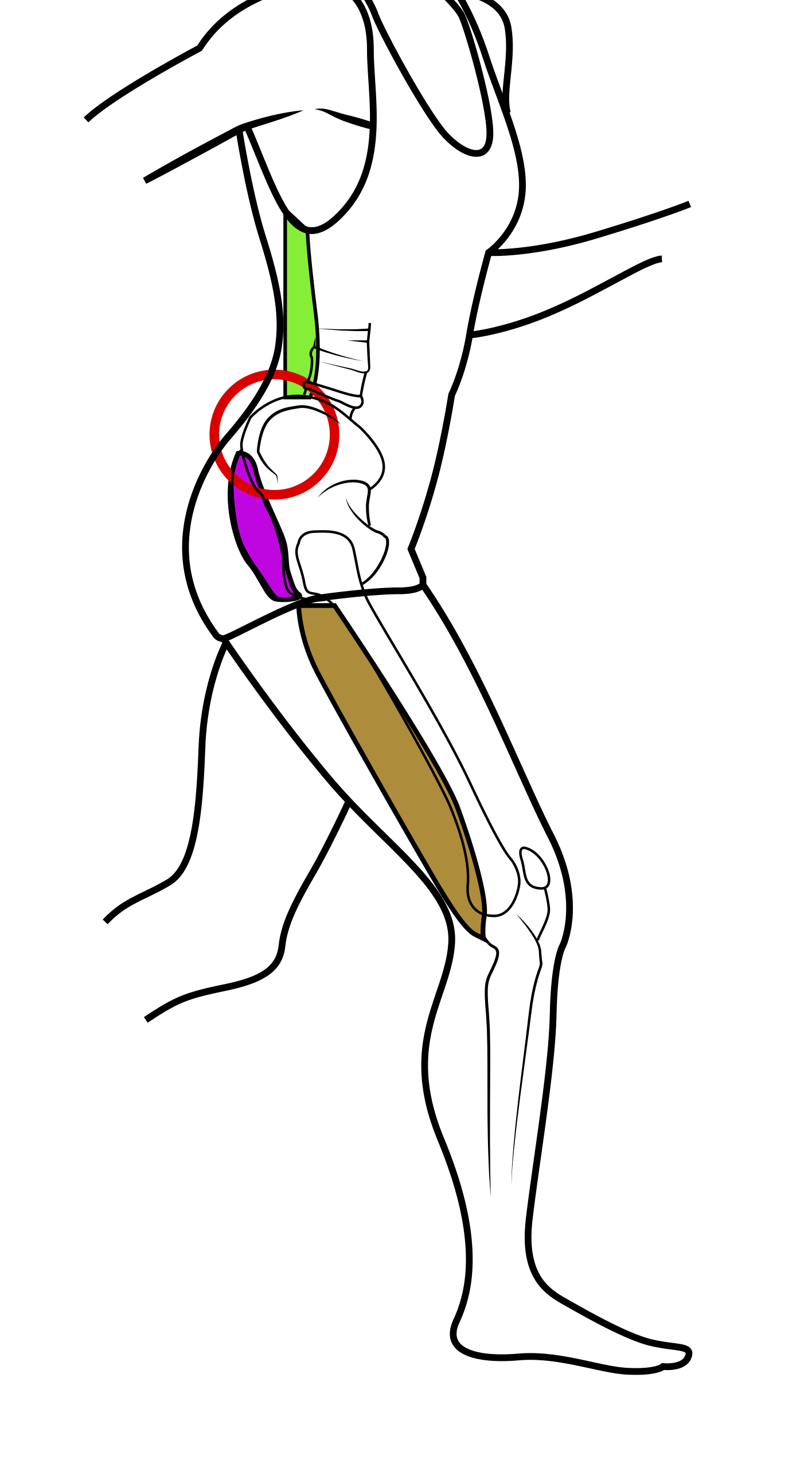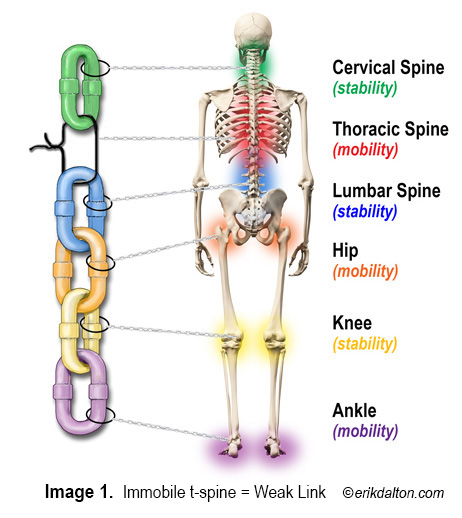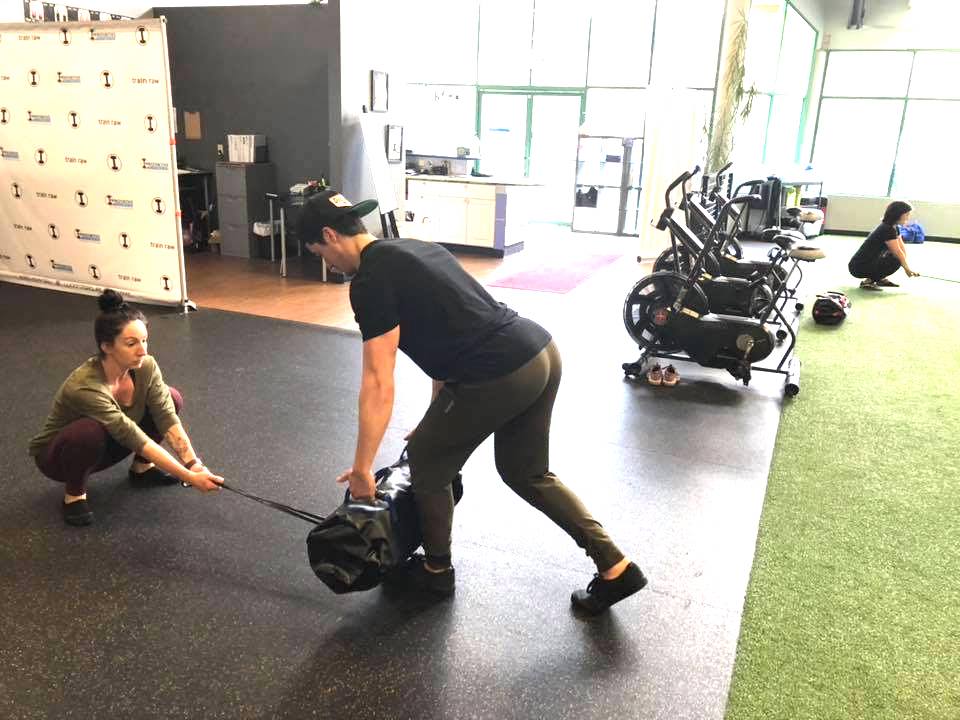Smarter Hip Mobility Training
2019-03-14
Hard to beat the great post that physical therapist, Scott Corso, shared HERE the other day about low back pain. However, low back pain is such a complex topic that I thought we could tackle not only the low back, but greater strength, fitness, and performance through discussing how you can build better hip mobility in your workouts.
Mobility training is all the rage in fitness right now and for pretty good reason. Many people come into training with severe mobility restrictions. They want to train hard, they want to reach their fitness goals, but it is a challenge when mobility is such a limiting factor.

The challenge many fitness professionals face is that these people want to train and the professional wants to do mobility upon mobility training. Both have great intentions, but both can be a bit misguided with their actual approach.
The client must understand that one of the easiest ways to get a well intended program derailed is injury or general aches/pains. When we load the body that isn’t able to bear the loads in a good way, we overload the wrong structures and develop all sorts of issues. We also can’t challenge people the way we want if they don’t move well!
From the fitness professional side, things like hip mobility are very important, but we don’t have to spend hours and lose the valuable time we have with people with majority of isolated mobility training.
It is a bit confusing to me how many professionals will say they believe in functional training. They don’t like to isolate muscles when they train, but when it comes to things like hip mobility, they will see the body is isolated ways.
Why is this an issue?
Mobility vs. Flexibility
What is the difference? Are these interchangeable terms? For the sake of the post we are going to make this simple. Flexibility refers more to the ability of someone to move your body through a range of motion. Mobility is more of your body’s ability to control movement through a range of motion. Without getting into all the science of motor control, it should make sense we want to control our movement more than have someone control it for us!

This doesn’t make all flexibility training bad, but it does mean we should spend our time prioritizing mobility. That being said, I remember in the late 90’s when I first got into corrective exercise, I dramatically changed a clients program after going to a course. I thought I had discovered ways of measuring all the things “wrong” with her. After a few weeks we had a shocking conversation.
She told me simply that she liked our workouts before more than what we were doing now. It was difficult for me because I truly believed what I was giving her was what she needed. “Why doesn’t she want to do what she needed?” was the big question I was asking myself.
Ultimately, what I asked myself was “is the work I am doing the MOST efficient way of accomplishing her goals and mine?” The answer was simply no. Much of what I was doing I would find out to be unnecessary. That helped me streamline what we should do in her training as well as it opened up my mind to the fact that these ideas like mobility are more related to strength than I had ever given them credit.
Hip Mobility Isn’t Just The Hips
The beginning of this post I said we shouldn’t isolate joints in our mobility training. Why? Simply because the body is interconnected. As renown physical therapist, Gray Cook, has said, “What you say about the hip means nothing if I don’t know the state of the lumbar spine, knee, hip and ankle.”

The hip is much of a reflection of what is happening below and above the joint. As we have discussed the Joint By Joint approach before, one segment of the body impacts another. In the case of hip mobility, what is happening at the foot and ankle plays a huge role on the hips as well as what is happening at the core.

If the foot and the core are not creating stability, guess how the body finds it? The body will rob mobility from the hips to find such stability. So, what can we do to create better hip mobility and how does strength play a role?
Smarter Hip Mobility Training
What is the solution to creating better mobility? We want to teach people to use their feet more, pretty much in everything they do. Since force enters our body through the ground, it makes sense we want people to understand how to use their feet. Sounds good, but how do we do so? Here are a few examples.
https://www.instagram.com/p/Cq0CX_VOtl2/
Creating better stability allows the nervous system of the body to take the “brakes” off of the need of the hips to create such stability. The gripping and more importantly “ripping apart” of the Ultimate Sandbag engages our core from the top down and the super band just reinforces the need of the hands and core to be active. So, when we get stability from above and below, guess what happens to our hip mobility?

We can use these strategies in more dynamic exercises over time to teach proper movement and stability.
This protective nature of the body also helps us understand why we progress our DVRT exercises in the manner we do! For example, if the glutes are working at a higher level, it can help give the body the impression we have better stability. However, feeling a “burn” isn’t the same as making the glutes work better!
The glutes are a function of the feet and the connection of the lats and core. So, when you think about how we should load the glutes and make them strong AND work better we have to think in terms of how we are integrating these ideas. That is why what DVRT Master, Greg Perlaki, demonstrates open up the door for better glute training and hip mobility improvements.
Why does strength have an impact upon hip mobility? Well, it depends how we think about “strength”. What we are really talking about is specifically applying load on the body to create tension. This has become more common place as people are learning that tension helps the core create stability that leads to opening better mobility.
This leads everyone trying to create tension, but they miss the science that tells us the amount of tension we can create is also a byproduct of the load used. “The active muscle tension produced by resistance is the most effective proprioceptive facilitation. The magnitude of that facilitation is related directly to the amount of resistance (Gellhorn 1949; Loofbourrow and Gellhorn 1949).”
This means that it isn’t JUST tension, but loaded tension that makes a difference. When we combine movement with proper load and tension it ends up being a recipe for creating great success as Greg shows in this Leg Threading series. This is a more complex form of hip mobility training. When we work through the foundations above, you will see how we can continue to add layers, but more importantly, cement these changes for your training!
Don’t miss our Father’s Day sale with 30% off our Force, Strength, & Burly Ultimate Sandbags and get TWO amazing training programs for FREE! Just use the code “father” HERE for this week only!
© 2025 Ultimate Sandbag Training. Site by Jennifer Web Design.







